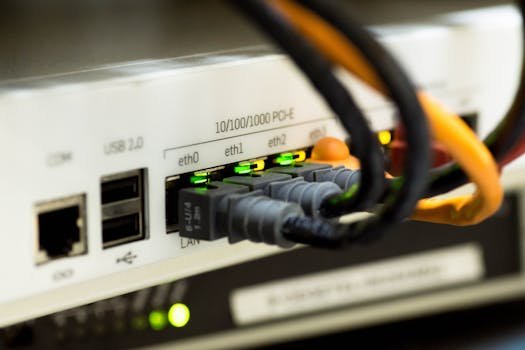A New Era of Global Connectivity in tele-communication
Access to reliable internet has long been considered a privilege in many parts of the world, constrained by physical infrastructure and geographic isolation. But as we move into the second quarter of the 21st century, the boundaries of connectivity are being shattered by the fusion of two powerful tele-communication technologies: satellite and cellular networks. This convergence, commonly referred to as satellite-cellular integration, holds the promise of extending mobile network coverage to virtually every corner of the globe—forests, oceans, deserts, mountain ranges, and disaster-hit regions.
Led by pioneering firms such as SpaceX (Starlink), AST SpaceMobile, and Lynk Global, this revolution is no longer theoretical—it’s operational. Telecom providers across the globe are forming strategic alliances with satellite operators to leapfrog traditional infrastructure bottlenecks. In this article, we explore how this integration works, its key players, recent advancements, technical and regulatory challenges, and what the future holds for true global mobile coverage.
🌍 Why Satellite-Cellular Integration Matters
According to the International Telecommunication Union (ITU), over 2.6 billion people still lack access to the internet. For mobile network operators (MNOs), bridging this gap has been a logistical nightmare, especially in rural or sparsely populated areas where erecting towers offers no return on investment. This is where satellite-cellular integration shines—it bypasses the need for ground infrastructure and enables direct connectivity between space-based networks and everyday smartphones.
With emerging use cases including emergency services, defense, mining, remote healthcare, and connected agriculture, the potential applications are vast. Let’s look at a breakdown of the key features and corresponding advantages:
| Feature | Advantage |
|---|---|
| Ubiquitous coverage | Ensures connectivity in deserts, oceans, forests, and mountain ranges |
| Infrastructure independence | Removes need for towers, fiber optics, or microwave links |
| Natural disaster resilience | Maintains network availability when terrestrial systems fail |
| Scalable IoT support | Connects low-power devices globally (e.g., agriculture, logistics) |
🚀 Recent Launches and Milestones
🔹 Starlink Direct-to-Cell: The Game Changer
In 2022, SpaceX revealed its intent to transform its Starlink satellite constellation with a “Direct-to-Cell” functionality. By 2024, this initiative had evolved rapidly, launching upgraded Gen2 satellites equipped with LTE modems capable of communicating with standard smartphones. In partnership with T-Mobile (USA) and Optus (Australia), Starlink aims to bring texting and eventually voice and data capabilities to mobile users without additional hardware.
📡 AST SpaceMobile’s Space-Based Cell Towers
AST SpaceMobile’s concept revolves around a massive phased-array antenna that functions as a cell tower in orbit. Their prototype satellite, BlueWalker 3, successfully completed two-way voice calls and video streaming to unmodified smartphones in early 2023. The full-scale commercial satellite, BlueBird, is scheduled to launch in late 2025, aiming to provide true broadband directly from space.
📲 Lynk Global: Low Earth Orbit Messaging Pioneer
Lynk Global took a different approach by focusing on low-bandwidth but high-impact services like SMS and alerts. It became the first company to send and receive messages between its LEO satellites and regular smartphones in 2021. As of 2024, Lynk has licensing agreements with over 20 countries and commercial services are expanding in disaster-prone areas in Asia and Africa.
🌐 Technology Behind Integration
The technological foundation of satellite-cellular integration is complex, involving advanced orbital mechanics, radio protocols, and antenna design. Here are the core components:
- Non-Terrestrial Network (NTN) Protocols: Part of the 3GPP Release 17, NTNs provide frameworks for interoperability between satellites and 5G/4G devices.
- Beamforming and Phased Arrays: Satellites dynamically steer signals using beamforming for efficient communication.
- Frequency Sharing: Spectrum management allows satellites to share frequency bands with terrestrial operators to avoid interference.
- Delay Management: Algorithms compensate for latency differences in orbital communications, especially for LEO-based systems.
Advances in AI and machine learning are now being applied to optimize routing, handovers, and resource allocation in hybrid terrestrial-satellite networks.
📈 Market Forecast and Commercial Interest
The non-terrestrial network (NTN) market is projected to exceed $25 billion by 2030, with 12–15% CAGR driven by demand in government, military, commercial IoT, and rural broadband. Tech giants and telecom operators are investing aggressively:
- AT&T and AST SpaceMobile
- Rakuten and Lynk Global
- Vodafone’s stake in both Lynk and AST
- Amazon Kuiper’s future direct-to-device ambitions
More than 80 countries are now issuing regulatory approvals for space-to-mobile trials. Africa, South Asia, and Latin America remain key focus areas.
⚠️ Challenges and Roadblocks
Despite promising potential, the path to seamless integration is riddled with challenges:
- Spectrum Allocation: Managing shared and dedicated bands between terrestrial and satellite providers requires global consensus.
- Orbital Congestion: Thousands of satellites increase the risk of collision and signal interference.
- Latency and Power Constraints: Real-time communication via satellite requires overcoming latency and power consumption on handsets.
- Cost: Launching and maintaining LEO satellites is capital intensive. Business models for emerging economies remain under evaluation.
🖼️ Ecosystem Overview
📚 Books for Further Reading
- The Satellite Communication Applications Handbook – Bruce Elbert
- Fundamentals of 5G Mobile Networks – Jonathan Rodriguez
- Satellite Communications Systems Engineering – Wilbur L. Pritchard
- Wireless Communications: Principles and Practice – Theodore S. Rappaport
- Mobile Satellite Communications – Madhavendra Richharia
📝 Disclaimer
This article is intended for educational and informational purposes. All third-party names, logos, and trademarks are property of their respective owners.
Information presented is based on public sources and used under fair use policy for analysis. Contact us via
technews9.com for copyright or correction requests.



Pingback: 6G on the Horizon- What will change with 6G ?